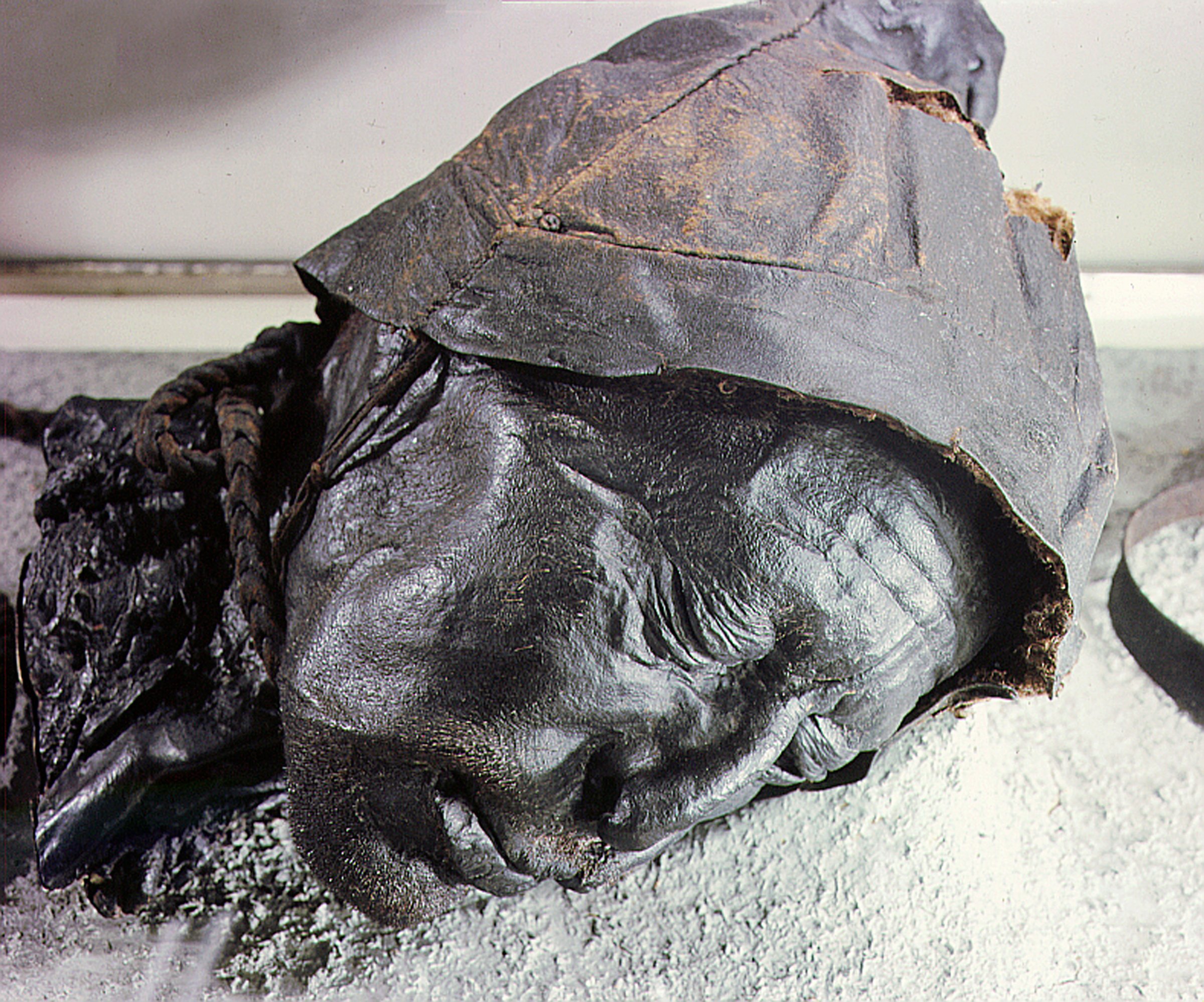
There are cold cases and there are cold cases, but it’s hard to beat the one that came to light on May 6, 1950, in Silkeborg, Denmark. The local folks were already on edge after reports that a schoolboy from Copenhagen had recently gone missing, and when two brothers from the nearby town of Tollund went digging for peat in a Silkeborg bog, they made a gruesome discovery: a buried body with a rope around its neck showing no signs of decomposition. This was a murder — and it was clearly a fresh one.
Except it wasn’t. The body wore no clothes other than a pointed, leatherized, sheepskin cap that seemed not of this era. The rope was handwoven, not machine-made. And the face of the victim was covered with stubble — clearly not belonging to a young boy. All that, plus the noose, plus the ancient history of the site, suggested that this was not a body from the early years of the space age, but the latter years of the Iron Age. Carbon dating confirmed that — placing the man’s death somewhere between 375 B.C. and 210 B.C.
The extraordinarily well-preserved state of what became known as the Tollund Man was due to the unique chemistry of the bog, with its lack of oxygen, cool temperatures and bacteria-unfriendly acidic environment. The fact that there were remains to unearth at all suggested that, despite the noose, this man was not technically murdered or hanged as a criminal. If he had been, he would have been cremated. Rather, he was probably ritually hanged as a spiritual sacrifice.
Some parts of the man’s body did not fare as well as others. His arms and hands were reduced to little more than a thin layer of toughened tissue covering bones. But his internal organs — particularly heart, lungs and liver — were very well preserved. He is thought to have been about 40 when he died and stood no taller than about 5 ft. 3 in. (1.6 m).
The Tollund Man is by no means the only bog person to have been uncovered in recent decades. About a thousand others have been found in Ireland, England, Denmark and the Low Countries. This July 27, which is, yes, International Bog Day, is a good time to tip a hat to these unglamorous mires of mud and decayed vegetation. They provide an extraordinary look into an often mysterious past — and allow the people of the Iron Age to make themselves mutely known in the modern one.
More Must-Reads from TIME
- Donald Trump Is TIME's 2024 Person of the Year
- Why We Chose Trump as Person of the Year
- Is Intermittent Fasting Good or Bad for You?
- The 100 Must-Read Books of 2024
- The 20 Best Christmas TV Episodes
- Column: If Optimism Feels Ridiculous Now, Try Hope
- The Future of Climate Action Is Trade Policy
- Merle Bombardieri Is Helping People Make the Baby Decision
Write to Jeffrey Kluger at jeffrey.kluger@time.com